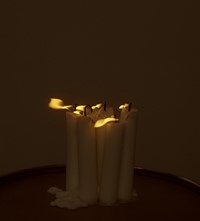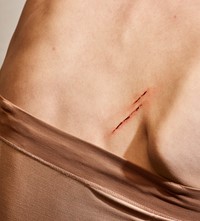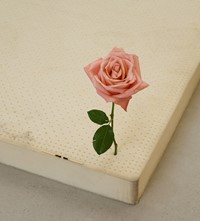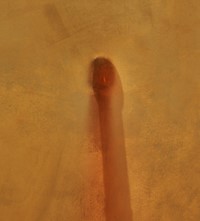“I like it when you look at a picture and you don’t know what you’re looking at,” says Casper Sejersen. We speak to the photographer and Another Man contributor as a new solo exhibition opens in London
- TextGemma Padley
For a man who speaks quickly, barely pausing for breath, Casper Sejersen doesn’t give much away. He is eager to talk about his new body of work, One, Two, Three, Four, which goes on show at Cob Gallery from this Saturday, but is equally keen not to say too much. This doesn’t come from a desire to be deliberately mysterious or evasive – the Danish photographer is personable and open – but rather because his work is all about suggestion. Less seems to be more, and being too literal or descriptive just isn’t his bag.
“I like to shoot simple things because then you can put your own stories onto the objects instead of having something described too clearly in front of you,” says Sejersen. “With this body of work it’s about objects I have always loved, sometimes very generic objects like matches or a glass. Of course, I have to make my pictures in a way I believe in and then it’s up to the viewer to create their own kind of vision from what they’re looking at. But I try to avoid looking into things too much. I would rather be inspired by music or a poem or by something from daily life.”
In his life as a fashion, beauty and still-life photographer, Sejersen has shot campaigns for Louis Vuitton, Mugler and Elie Saab, and his work has appeared in numerous magazines including AnOther and Another Man. In 2013, he was commissioned to photograph the cast of Lars von Trier’s Nymphomaniac and ended up shooting a set of “orgasm portraits”, which made it into his book, Belongs to Joe, published by MACK in 2015. If his editorial and commercial work is suggestive and darkly humorous, his personal work takes a more intimate turn. In fact, the images in this latest body of work are shot just about as close as you can get, almost uncomfortably so.
Scabs, scars, cuts, grazes, fleshy wounds and bloody scratches all feature. The work takes its cue from rhythm we are told, in particular, drumming, hence the title. “My father played drums and I did too,” says Sejersen. “Music and drumming have always been close to my heart. I wanted to do a story that was based on rhythm and rhythmic patterns, not in a literal way, but more in the case of childhood memories and how I, as a child, had to do things in a specific way. I used counting – the counting of a watch or counting table corners when I came into a room to keep myself in control. It wasn’t a big OCD thing it was more like how a child playfully avoids stepping on the cracks in the pavement. All these kinds of childhood memories about drums, control, being out of control, about the years before you turn into a man.”
In one set of images we see the skins of drums complete with all manner of marks and scuffs. Sejersen seems to be drawing a parallel between the marks on the surfaces of the drums and the marks of time and experience on human skin by juxtaposing close ups of each. When seen in this way, the photographs take on a sinister quality and hint at violence.
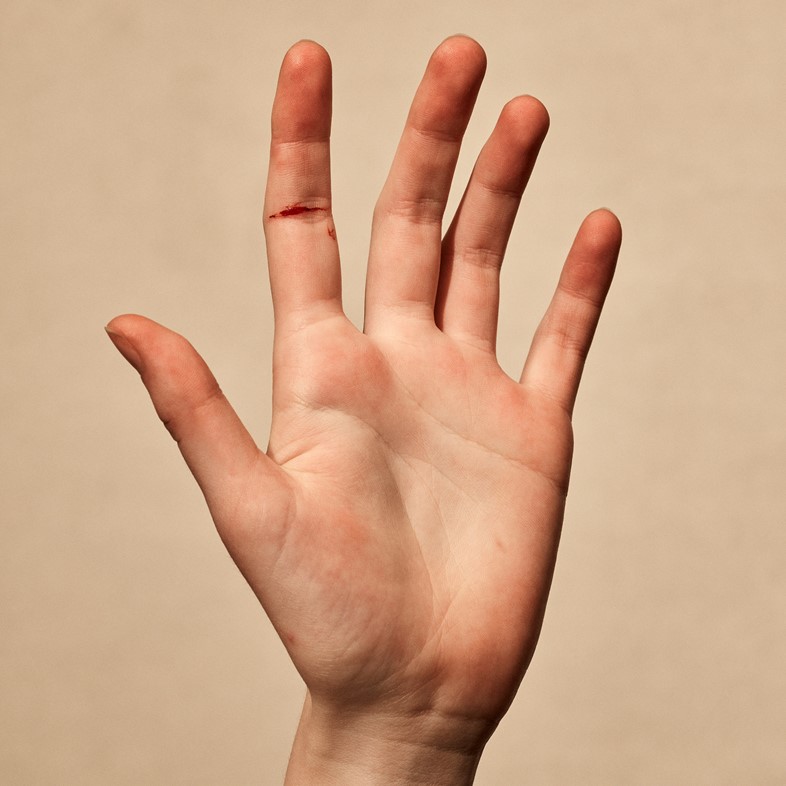
But for Sejersen, violence isn’t all that far from beauty and romance. “I like it when you look at a picture and you don’t know what you’re looking at,” he says. “For example, the photograph of a mark, a love bite, on a girl’s throat. At first it looks like it’s from violence, but when you read the title that mark turns into something else. I like these contrasts that come from very ordinary things or memories, and interpreting them.”
Indeed, dualisms or dichotomies – sound and silence, chaos and control, fragility and strength, reality and fantasy, pain and pleasure – are the lifeblood of this work, its pulse, its DNA. These polarities, which we sense aren’t really that far apart at all, are what make the work so densely layered and compelling.
“I’m always aiming for extremes, in a way,” says Sejersen. “If you look at a watch and the clock hand is one minute to 12, and that is pure hell, and one minute past is pure heaven, there’s only two minutes between them, and it’s so much more fun to be up there than it is to be at five, six, or seven o’clock. The best example I can give is when you bump into something and it hurts like hell, but the moment you can feel that the pain is getting smaller it is actually a little close to happiness even though it still hurts, because you feel that relief.
“Making the work has been a great journey,” he adds. “My fashion work has to have another life, but with this project I could be very personal. And yet, looking at the final pictures alongside everything else, I can see they have been there all along.”
One, Two, Three, Four is at Cob Gallery from May 11–June 15, 2019. Casper Sejersen will also be showing work with Cob Gallery at Photo London, from May 16–19, 2019.
